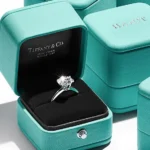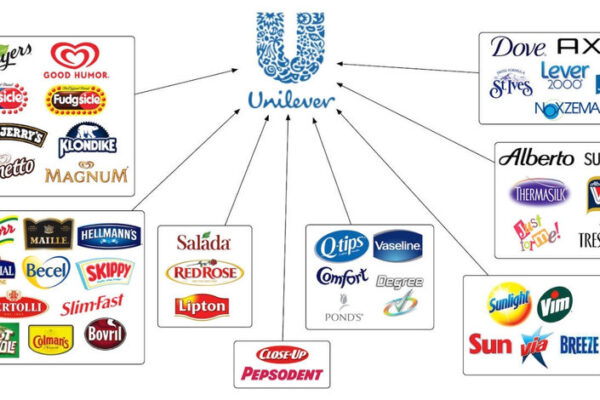In the ever-evolving world of advertising, one archetype that stands tall, embodying the essence of relatability, honesty, and authenticity is the Everyman. With its roots deeply embedded in the values of hard work and genuine sincerity, the Everyman archetype has carved a niche for itself amidst the glitz and glamour of mainstream advertising. It serves as a refreshing departure from the opulence and exclusivity often associated with marketing endeavors. In this blog post, we delve into the enduring charm of the Everyman archetype, exploring its pivotal role in advertising and the fascinating transformation it has undergone to maintain its relevance in today’s dynamic landscape. Join us on this journey as we unravel the timeless appeal of the Everyman and understand how it continues to capture the hearts of consumers in a world inundated with ever-changing trends and preferences.
What is the Everyman Archetype?
The Everyman archetype stands apart as a character deeply rooted in the everyday experiences of the reader. This persona represents the common person, someone relatable and familiar, making an instant connection with the audience.
At its core, the Everyman seeks simplicity in life. They embrace hard work, get along harmoniously with others, and find contentment in their surroundings. What sets the Everyman apart is their authenticity. Their genuine nature makes them not only likable but also endearing to both readers and fellow characters within the story.
The Everyman desires to belong. They yearn for connections and cherish existing relationships. In this pursuit, they share similarities with both the Lover and the Jester archetypes. However, while the Lover embodies intense passion and profound love, and the Jester masks their desire to fit in with humor, the Everyman effortlessly mingles with everyone around them.
In essence, the Everyman radiates happiness, at least initially. Their simple, relatable nature creates an immediate bond with the audience, drawing readers into the story through a character that mirrors their own aspirations and struggles.
How is the Common Person/Everyman Archetype Used
Incorporating a character embodying the Common Person archetype into your brand communication serves dual purposes, each enriching the reader’s connection with the story.
Firstly, this archetype establishes an immediate rapport with the reader, like the relatable charm we find in down-to-earth celebrities like Keanu Reeves. Despite not needing to be a millionaire, the traits of the Everyman bridge the gap between reader and character, creating an authentic bond that resonates deeply.
Secondly, the Common Person archetype often finds themselves thrust into unfamiliar and perilous situations, a classic element of the Hero’s Journey story structure. Initially, they exhibit a natural reluctance to act – a sentiment any of us might share when confronted with extraordinary challenges. Their lack of extraordinary talents in these situations makes them all the more endearing. We cheer for them precisely because they are just like us, grappling with the extraordinary using ordinary means.
This transformation journey often propels the Common Person into the role of the protagonist, the central character around whom the story revolves. Their evolution, spurred by their encounters, showcases their inherent potential. Alternatively, they can serve as a secondary character, but even then, they receive ample “screen time.” This spotlight illuminates their relatability, emphasizing how they navigate extraordinary circumstances despite their ordinary nature.
Exploring the Traits of the Common Person/Everyman Archetype
Curious about the traits of a Common Person? You might find them reflected in your own reflection, although rest assured, you possess unique talents and expertise that set you apart.
When crafting a character embodying the Common Person archetype, it’s essential to infuse them with qualities like acceptance, compassion, contentment, empathy, groundedness, hard work, humility, kindness, and relatability. These traits create a character that readers can connect with on a profound level.
However, to avoid monotony, it’s crucial to lend your Common Person flaws. Flaws add depth and complexity to characters, making them more engaging. Consider attributes like fear, anxiety, feeling out of their depth, being overwhelmed, powerlessness, reluctance, and being unprepared. These imperfections provide the Common Person with opportunities for growth, transforming them throughout the story.
Remember, the beauty of the Common Person archetype lies in their ability to evolve; they can transition from ordinary individuals to heroes or even villains, illustrating the transformative power of storytelling.
Examples of Everyman Archetype in Branding
Let’s delve into some notable examples demonstrating how the Everyman archetype can be effectively utilized in branding strategies. These brands have masterfully embraced the essence of the Everyman persona, connecting with diverse audiences and embodying relatability and inclusivity.
Target
Another compelling example is Target, a versatile retail giant. Target’s appeal lies in its affordability, inclusivity, and broad appeal, making it a go-to store for various demographics. Their slogan, “Expect more. Pay less,” mirrors Everyman values by promising quality without exclusivity. Target embodies the Everyman archetype by offering a diverse range of affordable products, showcasing its commitment to catering to the needs of everyone.
Wal-Mart
Wal-Mart stands as a quintessential example of the Everyman archetype. By pioneering the concept of housing an extensive range of products under one roof, Wal-Mart became the epitome of the average person’s ultimate shopping destination. Their commitment to offering affordable solutions for everyday needs aligns seamlessly with the Everyman archetype. Their slogan, “Save money. Live better,” embodies the core values of the Everyman, resonating with people from all walks of life.
IKEA
IKEA stands as a prime example of the Everyman archetype. Renowned for providing everyday furniture and products accessible to the average person, IKEA has meticulously crafted an image around affordability and functionality. Their tagline, “creating a better everyday life for many people,” perfectly encapsulates the ethos of the Everyman, emphasizing the brand’s commitment to enhancing the lives of ordinary individuals.
Budweiser
Budweiser, one of the top-selling beers in the United States, has crafted a communication strategy rooted in the Everyman character. Their marketing revolves around the simple pleasures of enjoying a beer and celebrating everyday moments that people cherish. By focusing on these ordinary yet cherished experiences, Budweiser forges a deep connection with consumers, emphasizing the joy found in life’s everyday indulgences.
eBay
eBay, a global e-commerce giant, operates on principles that echo the Everyman archetype. Their tagline, “connecting buyers and sellers globally,” highlights their dedication to providing the convenience of online transactions to people worldwide. Moreover, eBay’s values encompass everyday elements such as family, teamwork, and opportunity. By integrating these relatable values into their platform, eBay becomes more than just an online marketplace; it becomes a space where people from diverse backgrounds connect, trade, and pursue their aspirations.
Gap
Gap, a renowned global clothing retail company, is adept at resonating with its target customers, a hallmark of the Everyman archetype. They position themselves as industry champions, pioneering inclusivity in fashion. By understanding the diverse needs of everyday people, Gap creates clothing that caters to the average person, fostering a sense of belonging and accessibility in the world of fashion.
McDonald’s
McDonald’s, a fast-food chain spanning over 35,000 locations across 100 countries, thrives on delivering a message of simplicity, joy, and togetherness. Their emphasis on simpler pleasures and smiles has propelled them to become one of the world’s leading fast-food chains. What sets McDonald’s apart is its adaptability; they adjust their menu offerings to suit local tastes, embodying the Everyman archetype by catering to the preferences of ordinary people worldwide.
Levi’s
Levi’s, a brand synonymous with denim, embodies the essence of the Everyman archetype. Their jeans represent an average style and daily wear, capturing the spirit of the everyday person. Rooted in the concept of blue jeans and everyday activities, Levi’s celebrates the ordinary, turning it into something extraordinary. Through their focus on the familiar, Levi’s transforms the commonplace into a symbol of comfort and timeless fashion, making denim an integral part of people’s everyday lives.
Wrangler
Wrangler, a prominent American manufacturer of jeans and workwear, embodies the quintessential traits of the Everyman persona within their brand image. Renowned for their authenticity and approachability, Wrangler has earned a reputation as one of the most recognized and trusted clothing brands. Their commitment to crafting practical, durable workwear aligns seamlessly with the Everyman archetype, reflecting the values of the everyday person.
Wendy’s
Wendy’s, a fast-food chain famed for its distinctive square hamburgers, sea salt fries, and ice cream, positions itself as the epitome of quality. Their dedication to individuality and tonal authenticity makes them a pioneering force in the fast-food industry. Wendy’s continuous growth in a fiercely competitive environment showcases its embodiment of the Everyman archetype, emphasizing fairness, trust, and consistent delivery.
How to Use Everyman Archetype
Understanding how the Everyman archetype is used in branding is crucial. Everyman brands embrace a friendly, humble, and authentic tone of voice, resonating with audiences through messages advocating for equality and quality. They prioritize open and healthy communication, promising fairness and building trust. These brands focus on truth-seeking, expertise, research, and diligence, crafting warm and down-to-earth interactions with their customers. By fostering a sense of belonging, they offer practical solutions addressing fundamental needs, mirroring the approach of brands like Target. Wholesome imagery and messages of acceptance, akin to IKEA’s marketing, are common, often featuring ordinary individuals engaging in everyday activities. Within Everyman brands, the emphasis lies on consistent excellence, leaving little room for error, and ensuring that customers experience extraordinary service every time.
The Everyman archetype serves as a robust foundation for brands, fostering a sense of belonging and connection among consumers. It finds its most fitting applications in everyday essentials such as apparel, home goods, and family-related products. Brands embracing this archetype often embody qualities like integrity, high-quality standards, dependability, safety, and inclusivity.
Final Thoughts on Common Person/Everyman Archetype
Everyman brands epitomize realism and simplicity. Their culture revolves around providing exceptional value at a fair and reasonable price, making them appealing to a broad audience. These brands are conscious and thoughtful, avoiding excessive attention while ensuring they never leave anyone feeling excluded.
Industries related to everyday apparel, home and family life, automotive family segment, and comfort food find a natural fit with the Everyman archetype, allowing brands to create genuine connections and offer products that resonate with the everyday needs and aspirations of people.






![What Is Lifestyle Branding [Steps to Create a Lifestyle Brand]](https://naumandigital.com/wp-content/uploads/2023/02/12-600x400.jpg)
![What is a Brand Promise? [Strategies + Examples]](https://naumandigital.com/wp-content/uploads/2023/10/business-people-shaking-hands-in-agreement-600x400.jpg)

